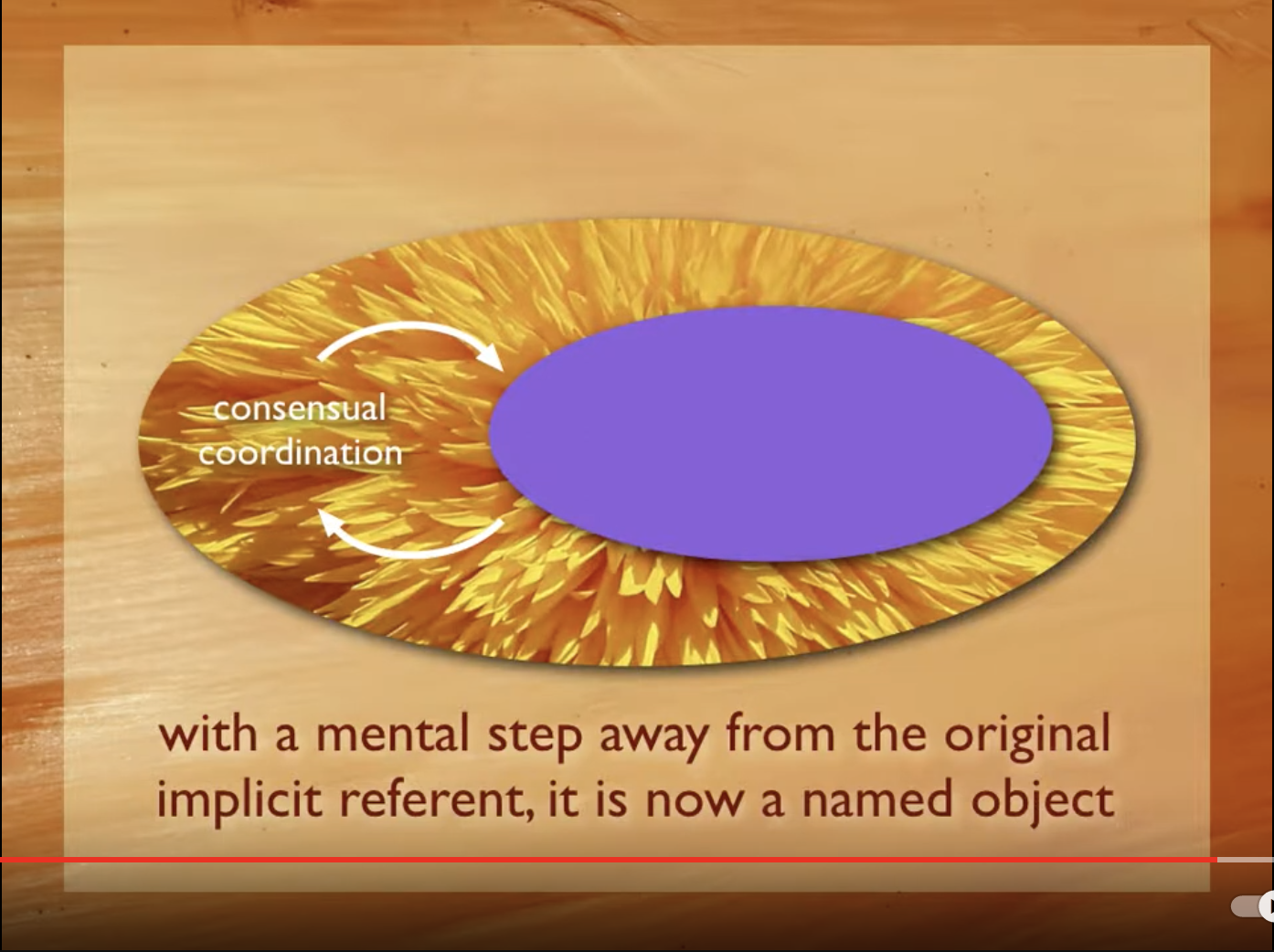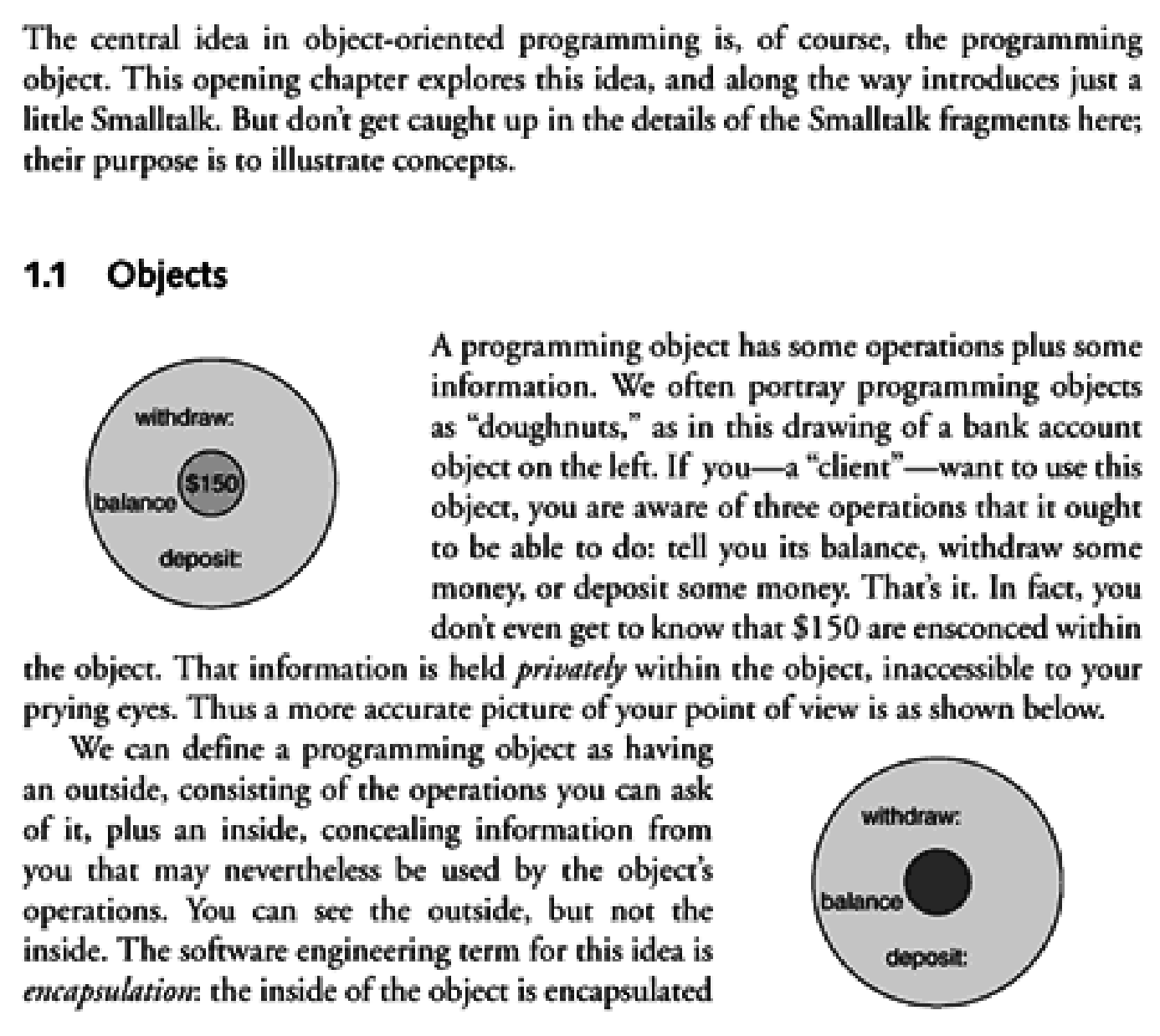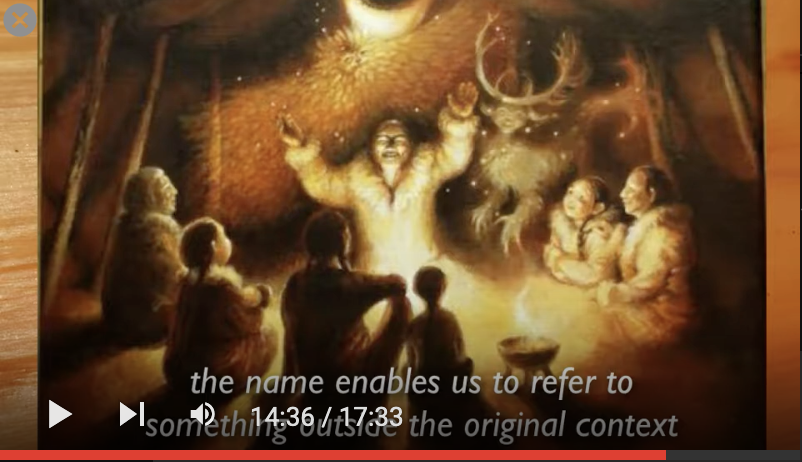YOUTUBE 9V0KRALjgTY 2018 Languaging: a spark, some light ... and dark - part 1 by Pille Bunnell
10:54 ![]() a signal that in this context this not means now we do and thus this becomes what we call a token – a token that has under it consensual coordination of consensual coordination this is a recursion
a signal that in this context this not means now we do and thus this becomes what we call a token – a token that has under it consensual coordination of consensual coordination this is a recursion
the token coordinates behaviour while obscuring the underlying recursion that gave rise to it
recurrences of token happen with increasing ease
eventually the token persists as "present" and becomes the possibility of a new coordination
with a mental step away from the original implicit referent, it is now a named object
~
The problem is “I,” the shortest selfreferential loop. When speaking about oneself, using “I,” Magic is performed. One creates oneself by creating oneself. “I” is the Operator who is the result of the Operation. -- Heinz von Foerster ⇒ The Ethical Imperative
~
11:19 ![]() that when there is a token there it obscures the consensual coordination of the actions that it coordinates. When we have a token we start saying it it is a thing but for the animal that does it and before we have had to look at in language it just did it. It is how things communicate in nature and I think in biosemiotics this is known as the Sign
that when there is a token there it obscures the consensual coordination of the actions that it coordinates. When we have a token we start saying it it is a thing but for the animal that does it and before we have had to look at in language it just did it. It is how things communicate in nature and I think in biosemiotics this is known as the Sign

13:20 ![]() this is a mental step away from the original implicit referent, it is now a named Object. This thing, this stick has a Name and we can speak to it and this is distinguishing and naming it has within it two recursions consensual coordination of consensual coordination of consensual coordination.
this is a mental step away from the original implicit referent, it is now a named Object. This thing, this stick has a Name and we can speak to it and this is distinguishing and naming it has within it two recursions consensual coordination of consensual coordination of consensual coordination.
And when we have this we have a named object which could be thing, an action, idea – anything – a gesture even well I guess that is an action but everybody I think important thing is that the name now enables us to refer for something Outside the original context.
~
Cf. a named Object as Doughnut with a token inside surrounded by consensual coordination selfreferential loops.
A programming object has some operations plus some Information. We often portray programming objects as "doughnuts." – Smalltalk, Objects, and Design. pdf ![]() , p. 1
, p. 1

~

14:36 ![]() Story Telling being able to begun to speak of something that isn't there in a way that evokes its presence and of course this has enabled a huge expansion in Language.
Story Telling being able to begun to speak of something that isn't there in a way that evokes its presence and of course this has enabled a huge expansion in Language.
~
Guy Steele demonstrates how Java should grow in the future and why what he proposes is the best path forward.
"Over the last quarter-century Guy Steele has been convinced that trying to design a complete and perfect programming language is the worst thing you can do. A programming language (including its associated libraries) must grow over time as its user community and its development community grow. This is a different situation from 25 years ago, when all such communities were relatively small. The difference is a problem of scale. As a result, programming language design now and in the future is necessarily as much a matter of social engineering as technical engineering and must rely more on a set of general principles than on a set of specific technical decisions."
22:13 ![]() the best of which is called Garbage Collection [⇒ Pervasion]
the best of which is called Garbage Collection [⇒ Pervasion]
27:44 ![]() the key point is that in the bizarre
style of building a program or designing a language or what you will the plan can change in real time to meet the needs of those who are working on it this tends to make users stay with it as time goes by
they will take joy in working hard and helping out if they know that their wants and needs have some weight
and their hard work can change the plan for the better their better.
Which brings me to the high point of my talk.
It seems in the last few years at least that if one is asked to speak at this meeting
one must quote Christopher Alexander […] ⇒ Frozen Future
the key point is that in the bizarre
style of building a program or designing a language or what you will the plan can change in real time to meet the needs of those who are working on it this tends to make users stay with it as time goes by
they will take joy in working hard and helping out if they know that their wants and needs have some weight
and their hard work can change the plan for the better their better.
Which brings me to the high point of my talk.
It seems in the last few years at least that if one is asked to speak at this meeting
one must quote Christopher Alexander […] ⇒ Frozen Future
~
A persistent feature of programming is how often one must deal with the unexpected. Some find this property annoying especially when hurried. But the more leisurely programmer finds discoveries a continual source of joy.